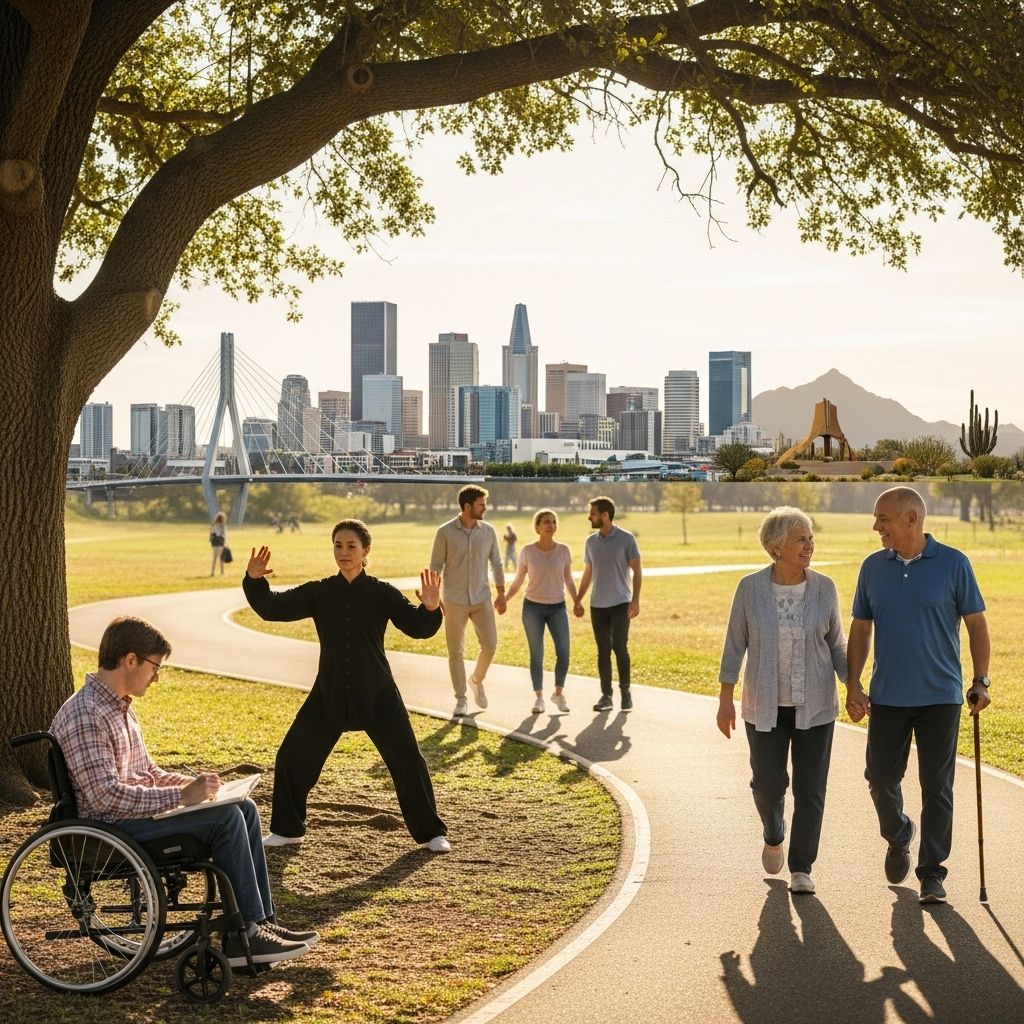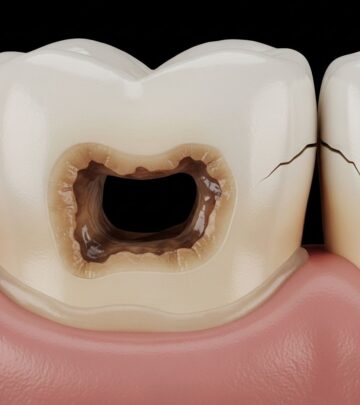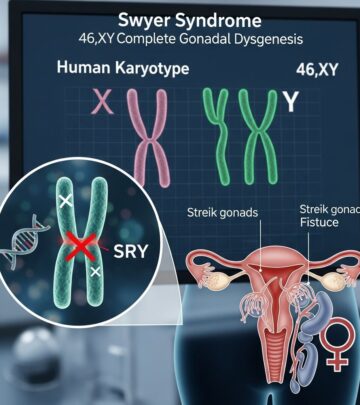The Best U.S. Cities for Living Well with Rheumatoid Arthritis
Explore the top U.S. cities that offer supportive environments, access to care, and lifestyle benefits for those managing rheumatoid arthritis.

Finding the right place to live with rheumatoid arthritis (RA) can make a significant impact on daily comfort, long-term health, and overall quality of life. Certain cities excel in offering supportive environments, access to comprehensive healthcare, favorable climates, and resources tailored to those managing chronic joint pain. This guide explores the key factors that make a location ideal for people with RA and highlights some of the best U.S. cities, along with key lifestyle tips and expert insights.
What Makes a City Great for People With Rheumatoid Arthritis?
People with RA face unique challenges that go beyond medical treatment. Weather, air quality, healthcare access, and even city infrastructure can all affect disease management. Consider these major factors when evaluating a new home city:
- Access to Rheumatologists and Specialty Care: Cities with a high concentration of rheumatologists, therapists, and specialized medical facilities make it easier to receive prompt, expert care and advanced treatments.
- Climate: Temperate, mild, and stable climates—without excessive humidity or cold—may ease joint pain and help prevent flare-ups.
- Air Quality: Cleaner air can reduce overall inflammation and discomfort, especially for those with both RA and respiratory sensitivities.
- Walkability and Transportation: Accessible public transit and infrastructure that supports limited mobility enhance independence and daily comfort.
- Lifestyle and Dietary Support: Access to nutritious food markets and supportive community resources can help maintain a healthier lifestyle tailored to RA management.
Key Health Insights: Rheumatoid Arthritis and Environment
Unlike osteoarthritis, RA is an autoimmune disease that causes chronic inflammation, joint pain, and may lead to joint damage if not properly managed. In addition to medication, environmental and lifestyle adjustments are crucial. Some cities naturally offer advantages that help people live more comfortably with this condition.
- Sunshine for Vitamin D: Abundant sunlight enables your body to produce Vitamin D, which may help prevent bone density loss—important because many RA medications heighten that risk.
- Low-Stress Environments: Chronic stress can trigger RA flare-ups; cities with better work-life balance and green spaces often foster reduced stress.
- Dietary Resources: Some regions offer greater access to anti-inflammatory diets and local produce known to benefit RA symptoms.
- Alternative Therapies: Locations with access to therapeutic amenities (such as hot springs or wellness centers) provide non-pharmaceutical tools for pain relief and joint comfort.
The Top U.S. Cities for Living with Rheumatoid Arthritis
The following cities stand out for people with RA due to their unique mix of climate, medical access, and community amenities:
1. New York City, New York
Why it’s great: A hub of world-class healthcare, New York City boasts an extensive network of rheumatologists (over 200 practitioners), hospitals, and research centers. Public transit and a dense urban environment can reduce reliance on driving, and numerous parks provide accessible green spaces for low-impact activity.
- Access to leading specialists in RA and physical therapy
- Diverse food options, including Mediterranean and anti-inflammatory diets
- Comprehensive public transportation system with accessibility features
2. Yuma, Arizona
Why it’s great: Consistently ranked as the sunniest city in America, Yuma provides almost daily sunshine. This setting helps residents maintain robust Vitamin D levels, potentially guarding against bone loss. The dry climate also minimizes humidity, which can aggravate joint pain for some individuals with RA.
- 90% chance of sunshine each day
- Dry heat preferred by many with joint pain
- Low precipitation limits dampness-related flare-ups
3. Salt Lake City, Utah
Why it’s great: Known for its stunning mountain scenery and relatively low crime, Salt Lake City offers a calming environment that may help reduce RA-related stress. The city provides a balance of urban amenities and relaxing natural retreats, which supports both mental and physical well-being.
- Abundant parks and recreational areas
- Relaxed pace of life and low stress
- Access to quality health services and alternative care
4. Athens, Georgia (and the Mediterranean Connection)
Why it’s great: Inspired by the Mediterranean diet, Athens highlights the benefit of plant-based, omega-3 rich foods. The region’s food culture offers a model for anti-inflammatory eating that can help manage RA symptoms.
- Proximity to local markets with fresh fruits, vegetables, and fish
- Supportive community wellness events
- Access to Mediterranean diet resources
Note: While Athens, Georgia draws inspiration from its Athenian Greek namesake, the benefits are based on diet and lifestyle practices associated with the Mediterranean region.
5. San Diego, California
Why it’s great: With a mild climate year-round, low humidity, and advanced healthcare infrastructure, San Diego makes managing RA symptoms easier for many. The city ranks high for walkability, public health programs, and abundant outdoor activities tailored for all abilities.
- Average temperatures remain moderate
- Low air pollution promotes healthier living
- Renowned centers for arthritis care and research
6. Seattle, Washington
Why it’s great: Seattle offers outstanding access to specialists, patient support organizations, and a robust public health system. The city’s infrastructure, including transit and walkable neighborhoods, offsets some disadvantages of its damp weather for those who manage joint discomfort well.
- Numerous rheumatology clinics and researchers
- Community engagement and wellness programs
- Health-focused food culture
The Influence of Diet and Local Food Culture
Diet is a critical component of life with RA. Regions with easier access to anti-inflammatory foods support a holistic approach to managing symptoms. Some beneficial features found in leading cities include:
- Mediterranean-Inspired Cuisines: Rich in vegetables, whole grains, fish, olive oil, and nuts—all shown to ease certain RA symptoms.
- Dairy and Vitamin K2: Some soft cheeses common in places like France (or cities with vibrant French communities) may reduce inflammation and promote bone health.
- Farmers Markets: Cities with ample local produce help residents maintain nutritious diets that complement medical treatment.
Alternative Therapies and Wellness Resources
Cities with a wellness-focused culture often provide more than just standard care. They offer resources such as:
- Therapeutic Hot Springs and Pools: Locations with easy access to therapeutic heat and water treatments can help relieve joint stiffness and pain.
- Mind-Body Programs: Many cities feature yoga, tai chi, and meditation classes tailored for people with RA, which can help improve range of motion and reduce stress.
- Arthritis Support Groups: Access to community support—both in person and online—provides emotional backing and practical advice for daily living.
Healthcare Access and Insurance Considerations
One of the most crucial aspects of living well with RA is dependable healthcare. The best cities generally demonstrate:
- A High Density of Rheumatologists: Shorter wait times, more appointment options, and a patient-centered approach to care.
- Advanced Treatment Centers: Teaching hospitals and research facilities offering the latest medications and clinical trials.
- Insurance Compatibility: Cities with robust health systems often support a wider range of insurance providers, easing access to expensive RA medications.
- Telemedicine Options: Even in top cities, telehealth expands access, especially for routine consultations or those with transportation barriers.
| City | Climate | Rheumatologist Access | Lifestyle Supports |
|---|---|---|---|
| New York City | Temperate, humid summers, cold winters | Excellent | Diverse food, walkable, transit |
| Yuma, AZ | Hot, dry, sunny | Good | Sunshine, low humidity |
| Salt Lake City | Dry, cool-temperate | Good | Scenic, relaxed, recreation |
| San Diego | Mild, coastal | Very good | Outdoor activities, pollution control |
| Seattle | Mild, rainy | Excellent | Support groups, health organizations |
Living Well With RA: Practical Lifestyle Tips
Beyond choosing the right city, adopting certain habits can lessen the daily impact of rheumatoid arthritis. Experts advise:
- Staying Active: Engage in low-impact activities like walking, swimming, or tai chi to maintain flexibility and strength.
- Managing Stress: Try mindfulness, relaxation exercises, or counseling to minimize stress-related flare-ups.
- Dietary Vigilance: Prefer anti-inflammatory foods; limit processed items, excess sugar, and foods known to trigger sensitivity.
- Regular Checkups: Coordinate care between your rheumatologist, primary care doctor, and any necessary specialists.
- Community Engagement: Participating in arthritis-friendly community programs can add social and emotional support.
Frequently Asked Questions (FAQs)
Q: Can moving to a new city cure my rheumatoid arthritis?
No, relocating cannot cure RA, but living in an environment with access to quality healthcare, clean air, and supportive lifestyle options can help you better manage symptoms.
Q: What is the ideal climate for someone with RA?
Mild, stable climates—especially those with moderate humidity and consistent weather—are generally most comfortable for people with RA. Extreme cold or humid conditions may exacerbate pain for some individuals, but preferences can vary.
Q: How important is having access to a rheumatologist?
Crucial. Early diagnosis and personalized treatment can prevent joint damage and reduce long-term complications. Cities with more rheumatologists tend to offer better care, shorter wait times, and advanced therapies.
Q: Are certain diets proven to help with RA?
While no diet can replace medical treatments, anti-inflammatory eating plans such as the Mediterranean diet—including omega-3-rich fish, olive oil, fresh produce, and whole grains—have shown benefits in reducing inflammation and improving joint health.
Q: What additional city features aid those with RA?
Accessible transportation, walkable neighborhoods, supportive health networks, ample outdoor spaces, and a community that encourages inclusive wellness make daily life easier for people living with RA.
For anyone coping with rheumatoid arthritis, selecting the right city is only one part of successful, long-term disease management. Wherever you live, prioritize consistent medical care, supportive lifestyle habits, and connected community—these elements together will help you thrive and live well with RA.
Read full bio of medha deb












